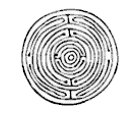Archaeological Background
Introduction
With the subsequent discovery and settlement by European Nations, the islands and the native peoples were changed forever. In the quest to colonise and extract maximum profits, many new species of plants and animals were introduced, as were millions of enslaved Africans who were forced to work on the newly established plantations, mines, and estates. Ultimately, labour had to be sought in China, India, and Portugal, and by the dawn of the 20th century, the Caribbean was a melting pot of cultures and traditions.
Throughout the seventeenth and eighteen centuries, the islands generated vast wealth for their European colonial Nations. As such, they were heavily defended, fortified, and the source of much conflict. On Antigua, a dockyard was established for the repairing and provisioning of ships for the Royal Navy. This island was particularly heavily fortified and many barracks were built to house the British Regiments stationed there.
Needless to say, Antigua is rich in history. However, much of what is known is derived from the early historical accounts written by the English colonists, missionaries, and planters. Archaeology in the Caribbean is in its infancy, yet it is already exploring and providing an alternative perspective. A significant contribution has already been made into our understanding of the pre-Columbian cultures of the Caribbean.
Introduction | Archaic Age | Ceramic Age/Pre Columbian Saladoid | Post Saladoid | Historical Period | Common Myths

